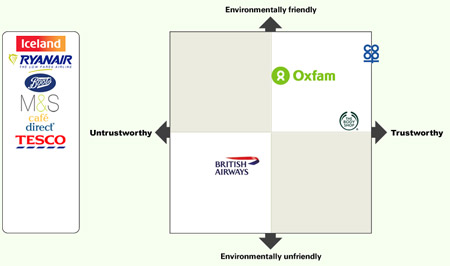What are slider controls? Slider controls are graphical image-based controls for collecting data in an online survey.
Here is an example of a slider control:
Can slider controls add value to your online surveys? The answer lies in a study conducted in 2007 by Nicola Stanley of Silver Dialogue Ltd and Stephen Jenkins of Snap Surveys. Together, they designed a survey study to evaluate the comparative qualities of graphical image-based control surveys in terms of the respondents’ experiences in completing the survey, including usability, engagement, and enjoyment of taking part in a graphical image-based survey.
The approach used in this study was to execute an online survey with half of the respondents using a traditional online survey tool with no slider controls. The remaining half of the respondents completed the exact survey questions, but with slider controls replacing the traditionally used radio buttons and check boxes. The online survey study was on the topic of environmental responsibility. The two respondent samples were selected from an online consumer panel of 600 respondents – 300 being asked to complete a standard online survey and the remaining 300 being asked to complete the online survey with slider controls.
The study focused on 3 areas: Engagement, Usability, and Accuracy.
Engagement
One of the hypotheses of the online study was that younger aged groups would find a survey with slider controls more appealing. Surprisingly, this was not the case. The slider controls appeared to have the highest appeal amongst 25-34 year olds.
One criticism of using graphical controls in online surveys has been that the survey may take longer to complete. In effect, the study found that it took respondents only 10% longer to complete the online survey with slider controls than with conventional radio buttons or check boxes. The respondents with the standard online survey did not need descriptive notes or instructions on how to complete the questions as they all would have been comfortable with completing a survey with conventional radio buttons and check boxes. The respondents who completed the online survey containing slider controls did receive some direction and this may have contributed to the 10% increase in completion time.
Many positive comments were received for the graphical image-based survey in terms of enjoyment and interest. It can be argued that if respondents feel more involved in the survey, their replies may be more accurate.
Usability
Naturally, the study found that the standard online survey with no slider controls was both faster to load and easier to complete. However, the differences were not significant. The standard survey scored 91% for ease of response compared to 89% for the survey with slider controls. Advances in survey technology since 2007, especially in Snap Survey Software, have little to no delay in online surveys with graphical image-based controls.
Accuracy
The study found that when respondents were presented with either a 5-point rating scale question format on the standard survey or the equivalent question in the form of an image of a thermometer with slider controls, higher scores were recorded using the slider controls than the traditional 5-point rating scale question format. The typical increase was in the region of about 11%.
Here is an example of a thermometer slider control:
Also included in the graphical image-based survey was an innovative graphical control. An innovative graphic control is used to simulate perceptual brand mapping. This image control format allowed respondents of the survey with slider controls to simply drag-and-drop images from one area of the screen onto a map. Again, the results of the study yielded a slightly higher percentage than the standard survey with a 10-point radio button scale.
Here is an example of an innovative graphical control:
Conclusion
The authors of the study were very optimistic with the results of the survey, having found no disadvantages of using slider controls in terms of either completion times for the survey or responses rates.
Slider controls are another innovative way to engage survey respondents. Why not give slider controls a try in your next online survey?
To learn how to use Slider Controls in your online surveys using Snap Survey Software:
Link to worksheet: Adapting the Slider Control templates for you own use






